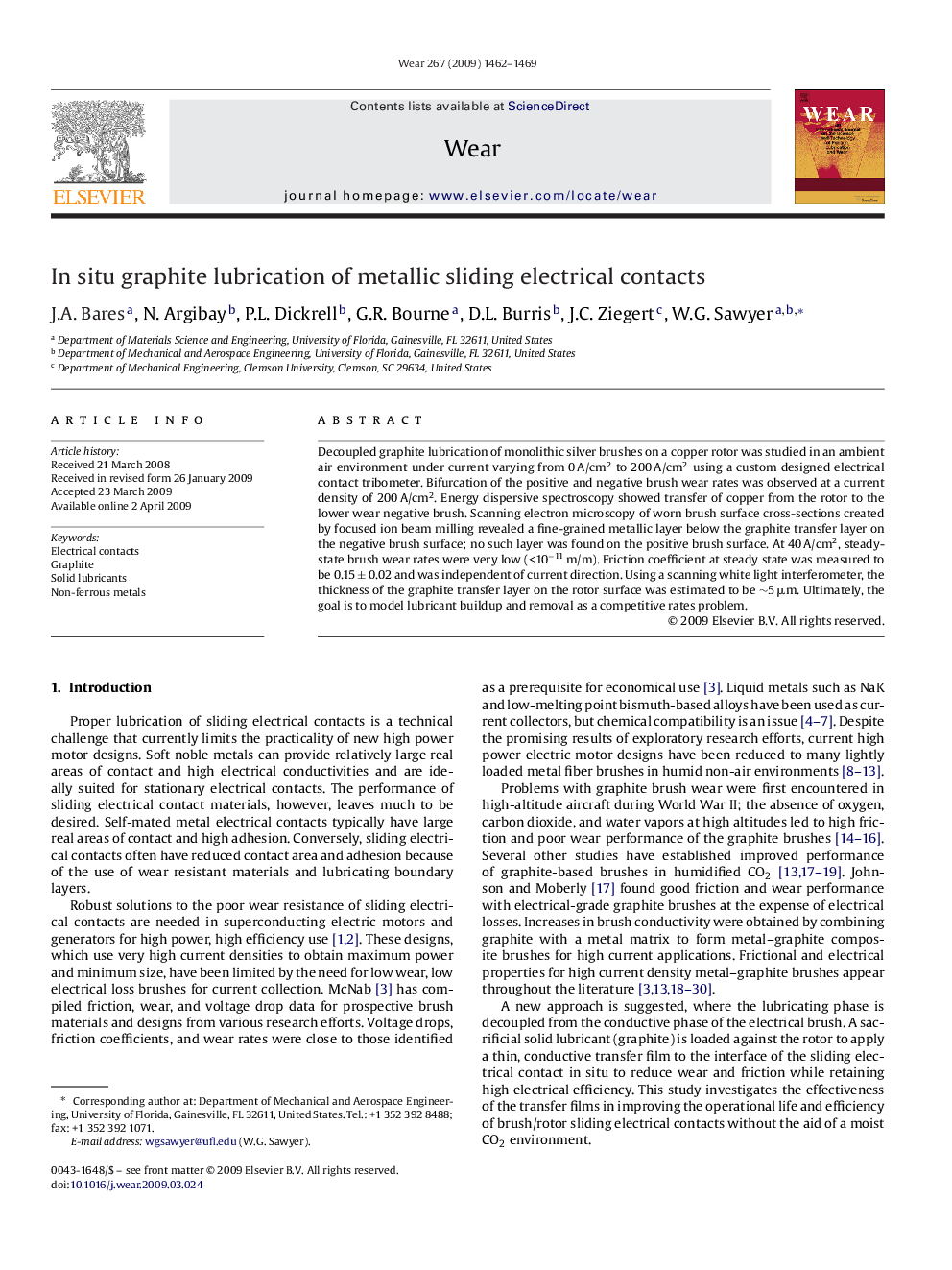| Article ID | Journal | Published Year | Pages | File Type |
|---|---|---|---|---|
| 618533 | Wear | 2009 | 8 Pages |
Decoupled graphite lubrication of monolithic silver brushes on a copper rotor was studied in an ambient air environment under current varying from 0 A/cm2 to 200 A/cm2 using a custom designed electrical contact tribometer. Bifurcation of the positive and negative brush wear rates was observed at a current density of 200 A/cm2. Energy dispersive spectroscopy showed transfer of copper from the rotor to the lower wear negative brush. Scanning electron microscopy of worn brush surface cross-sections created by focused ion beam milling revealed a fine-grained metallic layer below the graphite transfer layer on the negative brush surface; no such layer was found on the positive brush surface. At 40 A/cm2, steady-state brush wear rates were very low (<10−11 m/m). Friction coefficient at steady state was measured to be 0.15 ± 0.02 and was independent of current direction. Using a scanning white light interferometer, the thickness of the graphite transfer layer on the rotor surface was estimated to be ∼5 μm. Ultimately, the goal is to model lubricant buildup and removal as a competitive rates problem.
